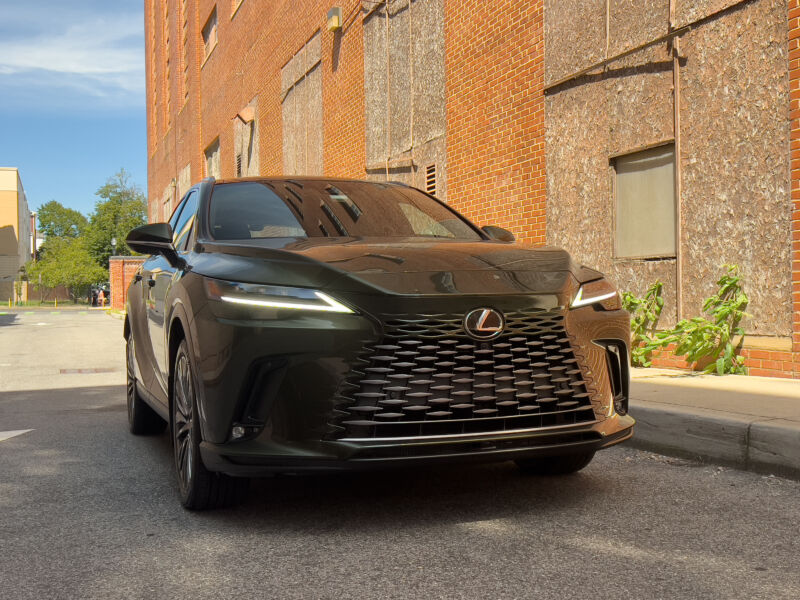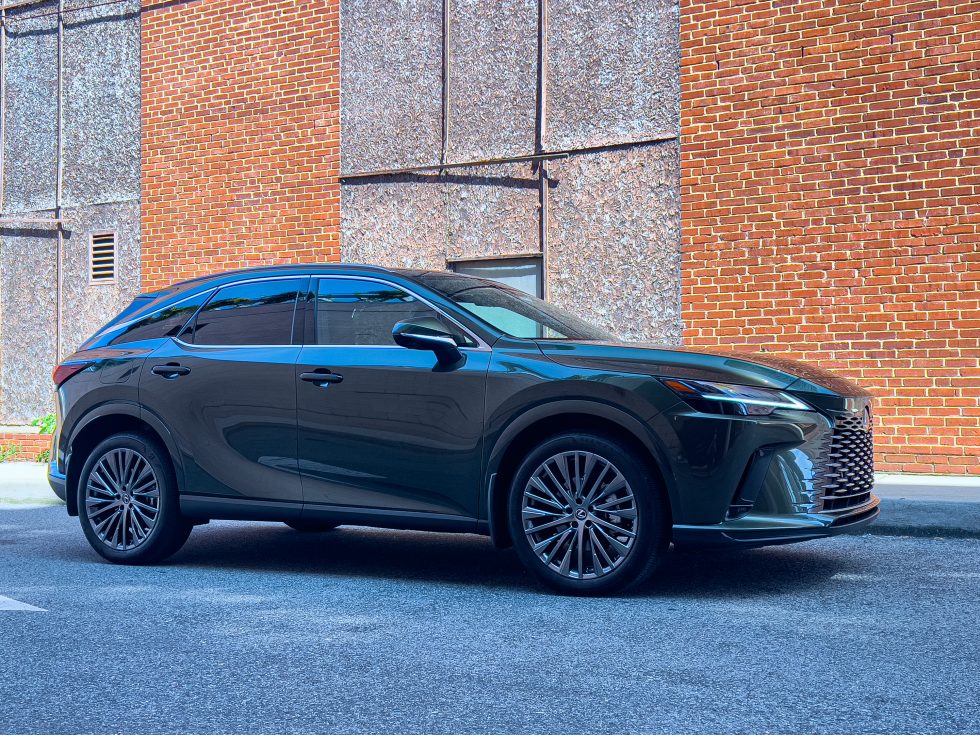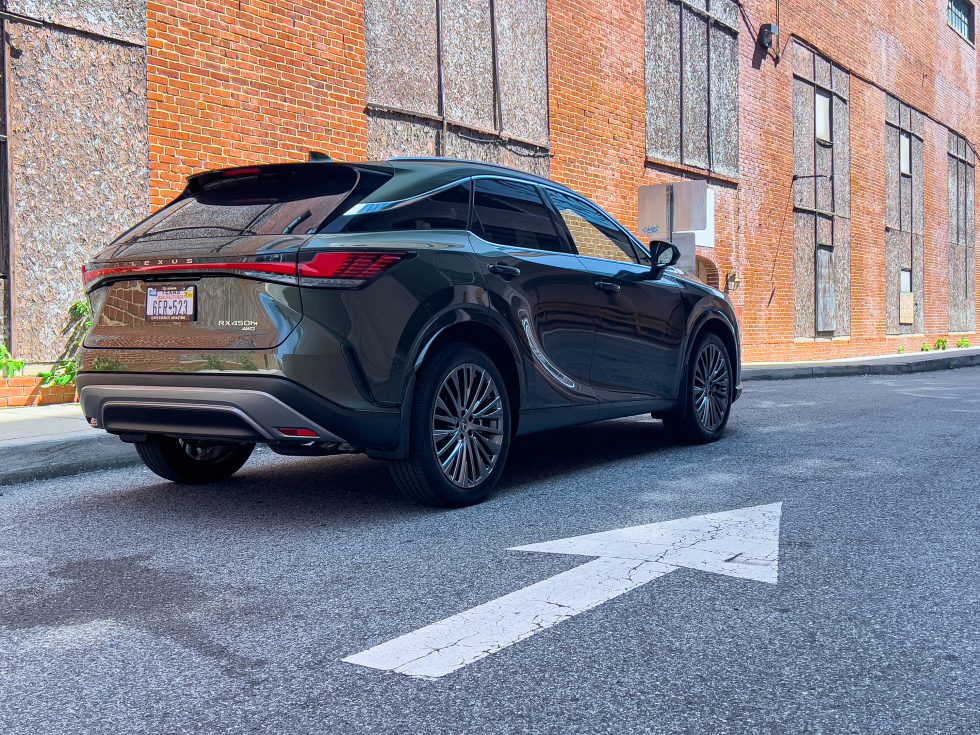
Jonathan Gitlin
Arguably, some of Lexus’ greatest innovations have been in its product strategy as much as any technology to emerge from its R&D labs. When it launched in 1989, it was with the idea that a car could combine Japanese reliability with the luxury and power expected from a big German sedan. A few years later the RX basically invented the crossover category with SUV-like looks but with fewer of the handling compromises.
I’ll be frank—I haven’t always jelled with those crossovers. During the last couple of years we tested both the RX 500h F Sport, which I didn’t find that sporty or particularly efficient, and the battery-electric RZ 450e, which left me very cold. Third time is evidently the charm, because I got on much better with the topic of today’s review, the RX 450h+ Luxury, to give it its full name.
This is Lexus’ plug-in hybrid version—the 500h carries a much smaller battery that only recharges as the car drives. In fact, it’s the same plug-in hybrid powertrain as that found in the smaller, cheaper NX crossover, combining a 2.5 L four-cylinder gasoline engine and a pair of electric motors fed by an 18.1 kWh lithium-ion battery pack. Total power output is 304 hp (227 kW), but Lexus has declined to publish a combined torque figure or any outputs for the electric motors.

Jonathan Gitlin
Lexus figures that the RX 450h+ can drive 37 miles (60 km) on a fully charged battery, which takes about 2.5 hours to recharge via a level 2 plug. Like most plug-in hybrids, you can also tell it to conserve battery charge while you’re driving, or even have the engine rev a little higher and charge it while you drive (albeit with some reduction in efficiency, obviously).
I think in real-world use the actual number will be closer to 30 than 37, but with a fully charged pack each morning, that’s most or all of your average driver’s daily distance. It’s a very smooth motor in terms of power delivery, and the one-pedal driving mode (engaged by selecting B instead of D) has been well-calibrated with a very easy-to-modulate throttle.
It’s a little less smooth when the internal combustion engine is running, at least aurally. I’m not entirely sure if it’s an Atkinson cycle engine like you’ll find in Toyota’s many hybrids and PHEVs, but when its working hard it sounds harsh and, honestly, a little unbecoming a luxury brand.
Even when the plug-in pack is depleted to the point where the EV range is showing zero miles, there remains enough overhead in the battery to allow the RX to operate like one of Toyota or Lexus’ parallel (not plug-in) hybrids. Expect about 36 mpg (6.5 L/100 km) in this mode.
I enjoyed driving the RX 450h+ much more than the 500h, with its sporty pretensions. It’s not especially fast by the standards of 2024—if you floor it in sport mode, 60 mph (98 km/h) should show up in about 6.2 seconds—but turns well with acceptable steering feel. You might not want to take it down Tail of the Dragon, but I did enjoy curved highway intersections.
-
Visibility is quite good from the driver’s seat.
Jonathan Gitlin -
A look at the rear.
Jonathan Gitlin -
Here, there’s 29.6 cubic feet (838 L) with the seats in use, or 46.2 cubic feet (1,308 L) with the rear seats flat.
Jonathan Gitlin -
The doors are my favorite bit of the interior.
Jonathan Gitlin -
The main instrument display.
Jonathan Gitlin -
Here’s what CarPlay looks like.
Jonathan Gitlin -
The native infotainment UI.
Jonathan Gitlin
I must also praise the cabin. Stay away from weird color choices—thinking about the red leather seats in the aforementioned 500h—and stick to earth tones, here with semi-aniline leather in places. Lexus’ design team seems to be particularly good at door cards (the interior-facing bit) with a mix of materials that is interesting to the touch and the eye.
Can a car have Alzheimer’s?
However, some aspects of the RX 450h+ did manage to annoy me, and most of them are related to the electronics and infotainment. For example, why, when you start it up, is the car able to remember that the heated or cooled seats were previously on, but can’t remember that the air conditioning was also turned on? And having to reset the brake hold function (to turn it on) every time you start the car is also a pain.
It can be a bit hard to reach the far corner of the 14-inch infotainment touchscreen, depending on how large a human you are, and try as I might I could not fathom a way to dim the screen’s brightness at night, which was considerable even in night mode. The actual infotainment system itself is oddly limited in some ways, but it does feature wireless Apple CarPlay and Android Auto, so most people will simply cast their phones. I don’t pick on the infotainment to be mean, but it’s an area where most of Lexus’ rivals, particularly the European ones, are handily beating it.
Lastly, the automatic emergency braking system was a little jumpy. Not quite Honda-bad, but it did intervene inappropriately twice during a week.

Jonathan Gitlin
Given the plug-in hybrid powertrain, the RX 450h+ is the priciest of the RX range, starting at $70,080. Blame all that lithium-ion, I guess. There are cheaper plug-in SUVs out there, even from luxury automakers, but you’d spend more on a BMW X5 PHEV, albeit one with more power. Anyone looking at the RX would have to have made peace with the giant cheese grater grille, but you can’t see that when you’re in the driver’s seat, and after a week I discovered I rather liked sitting there.
